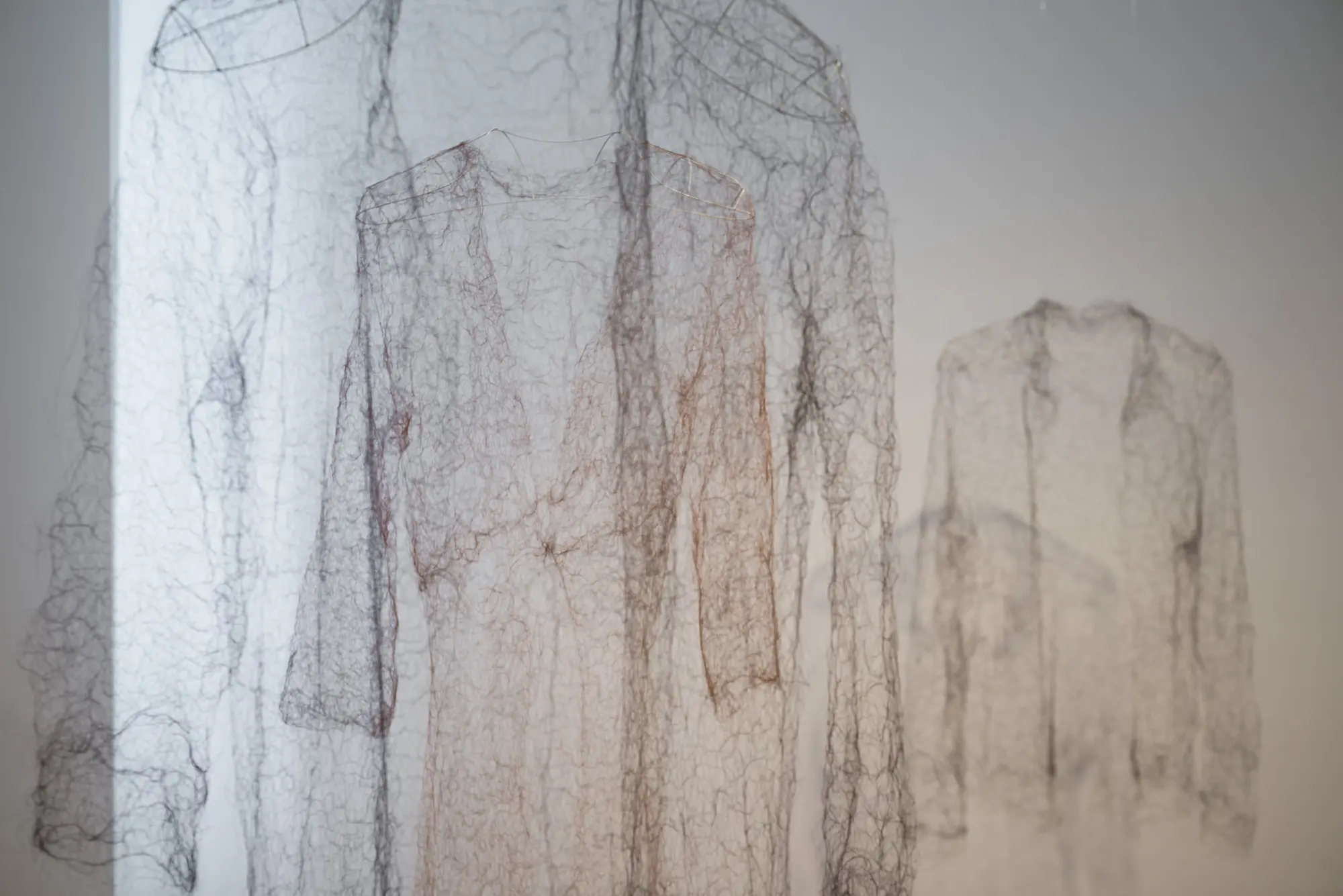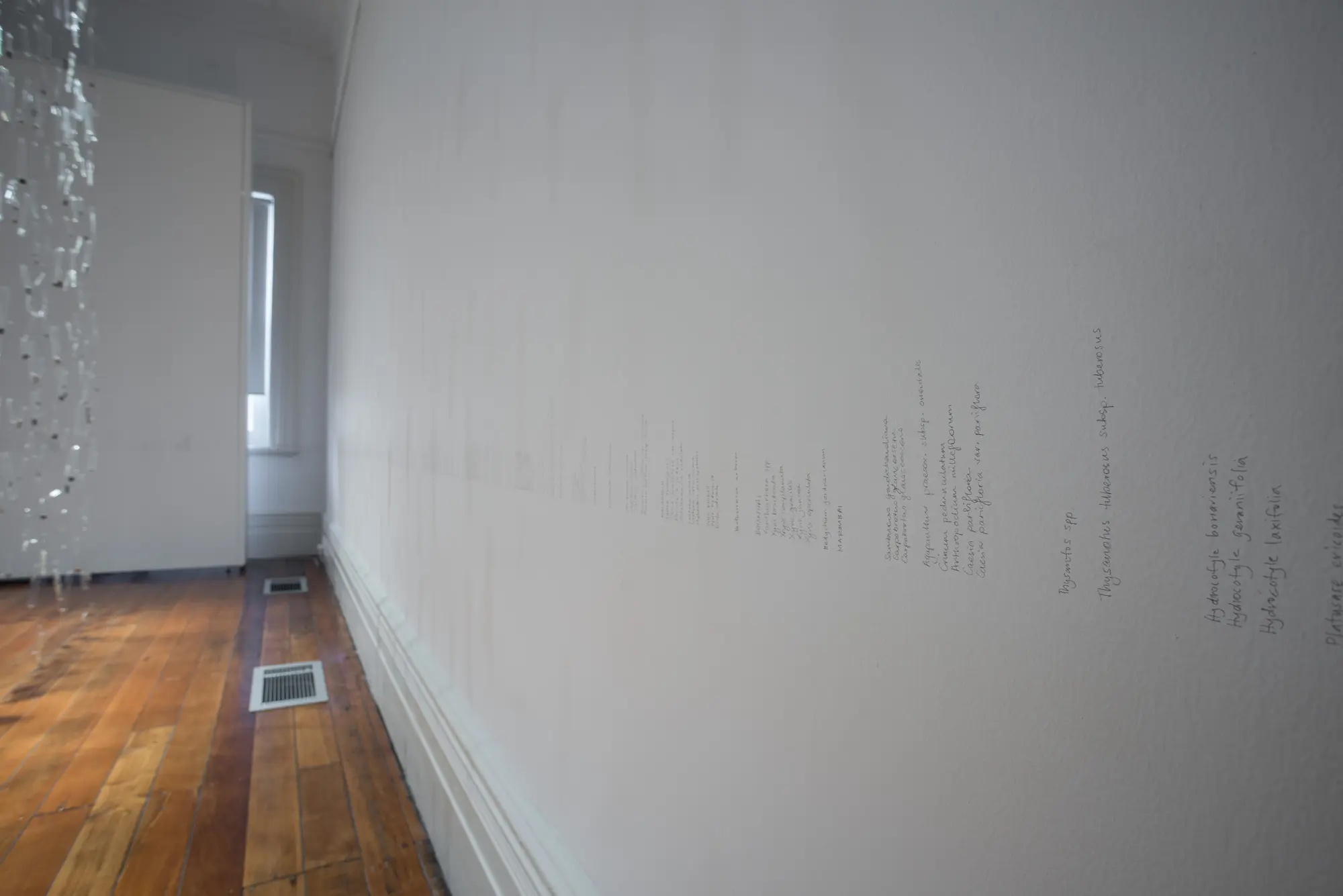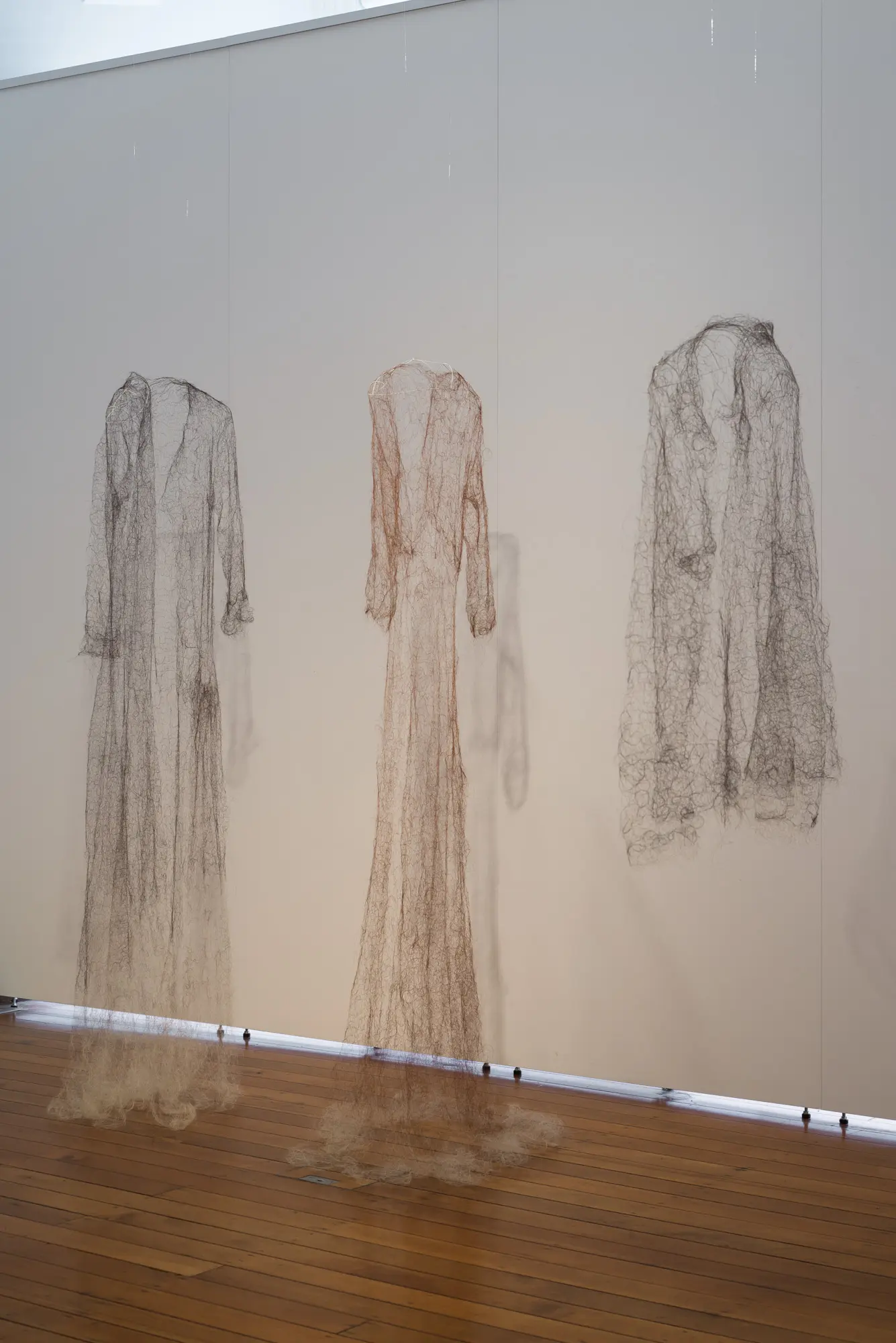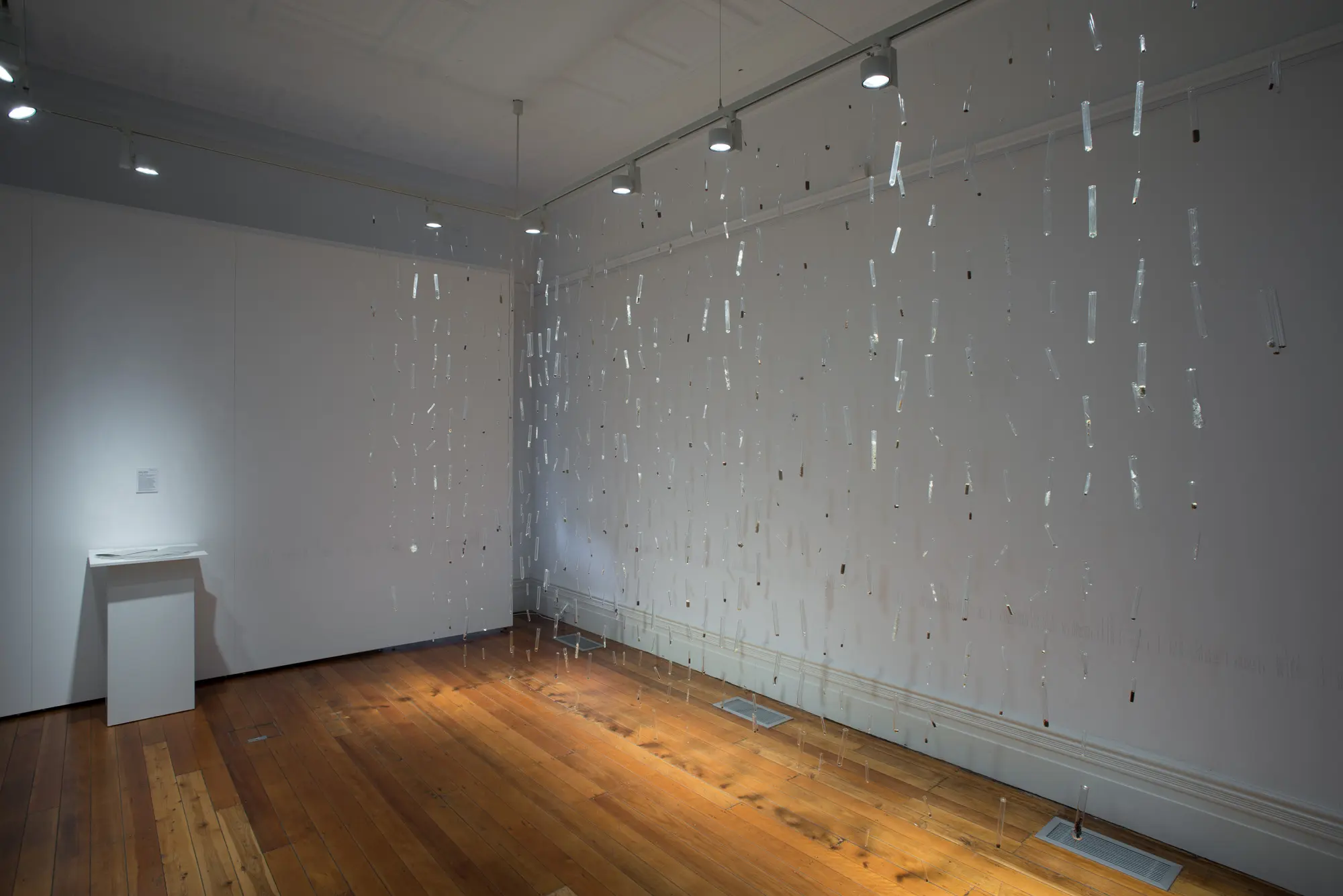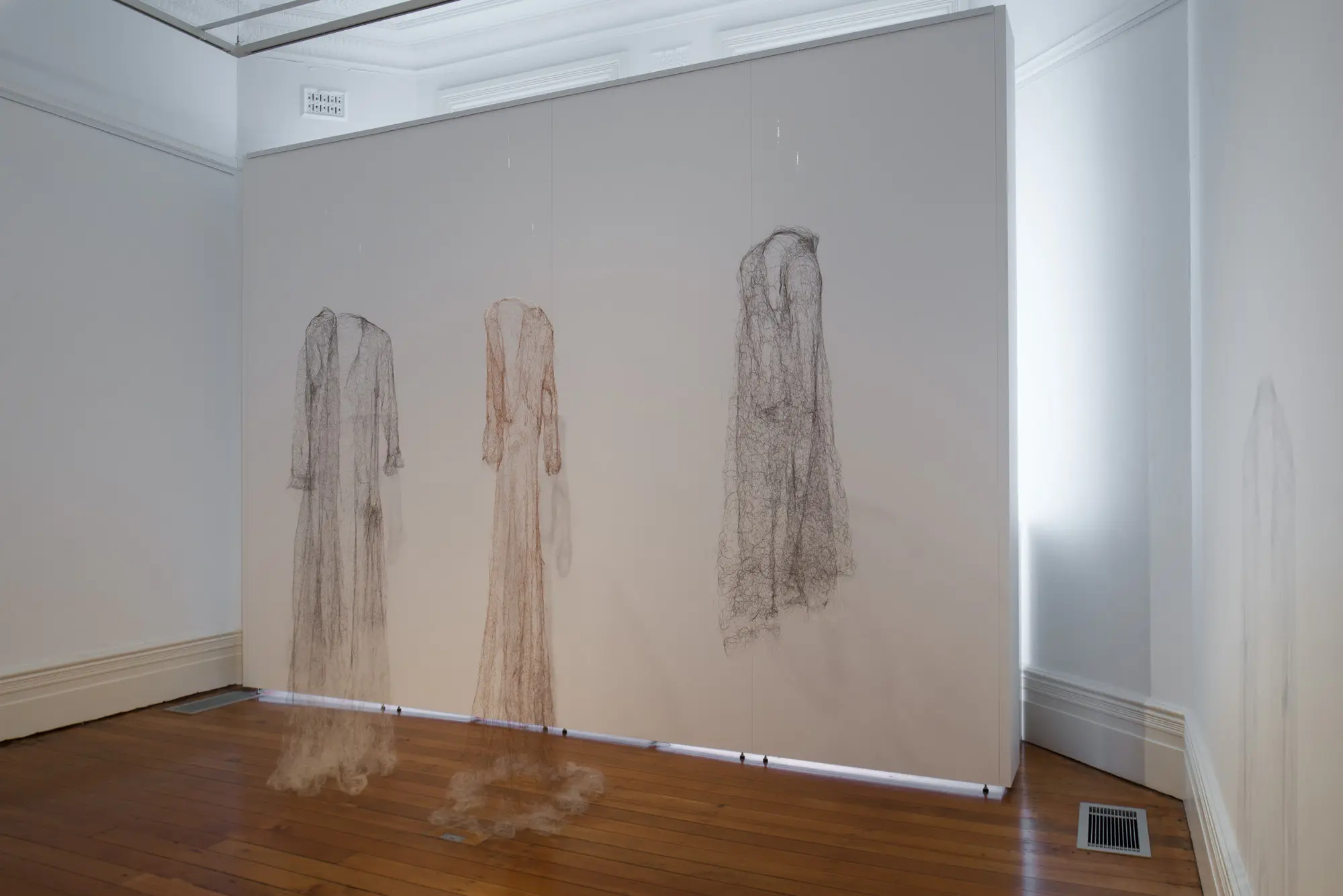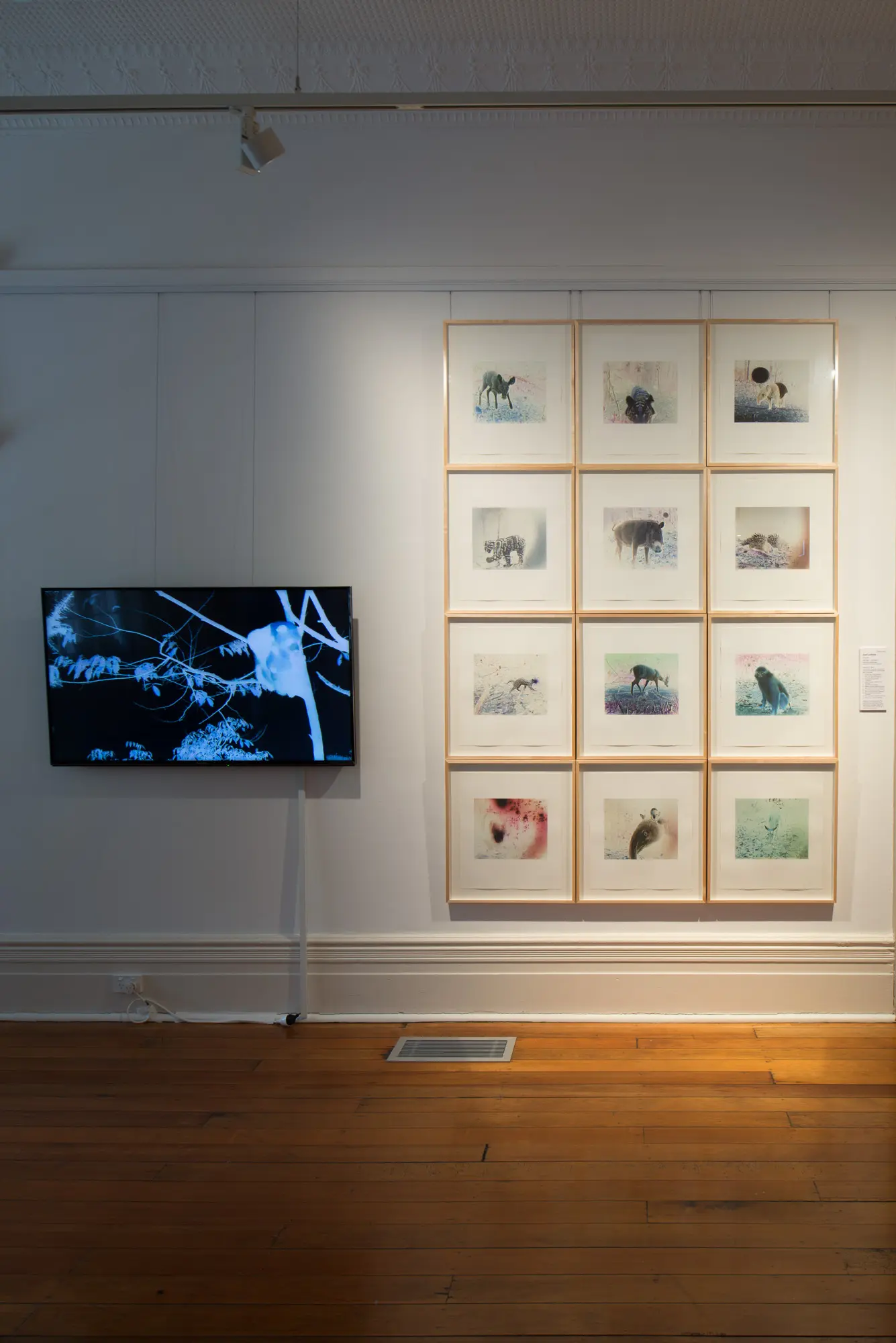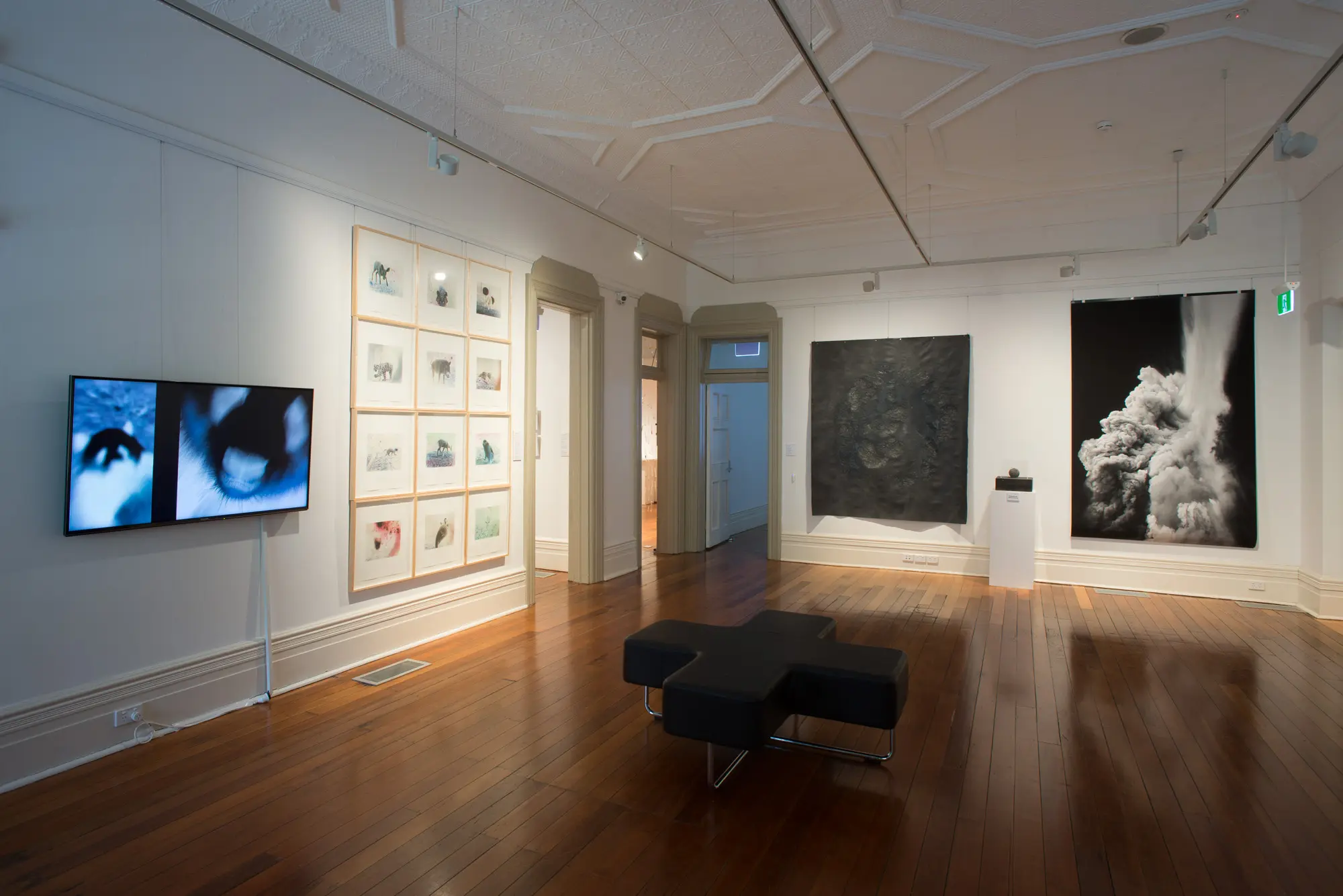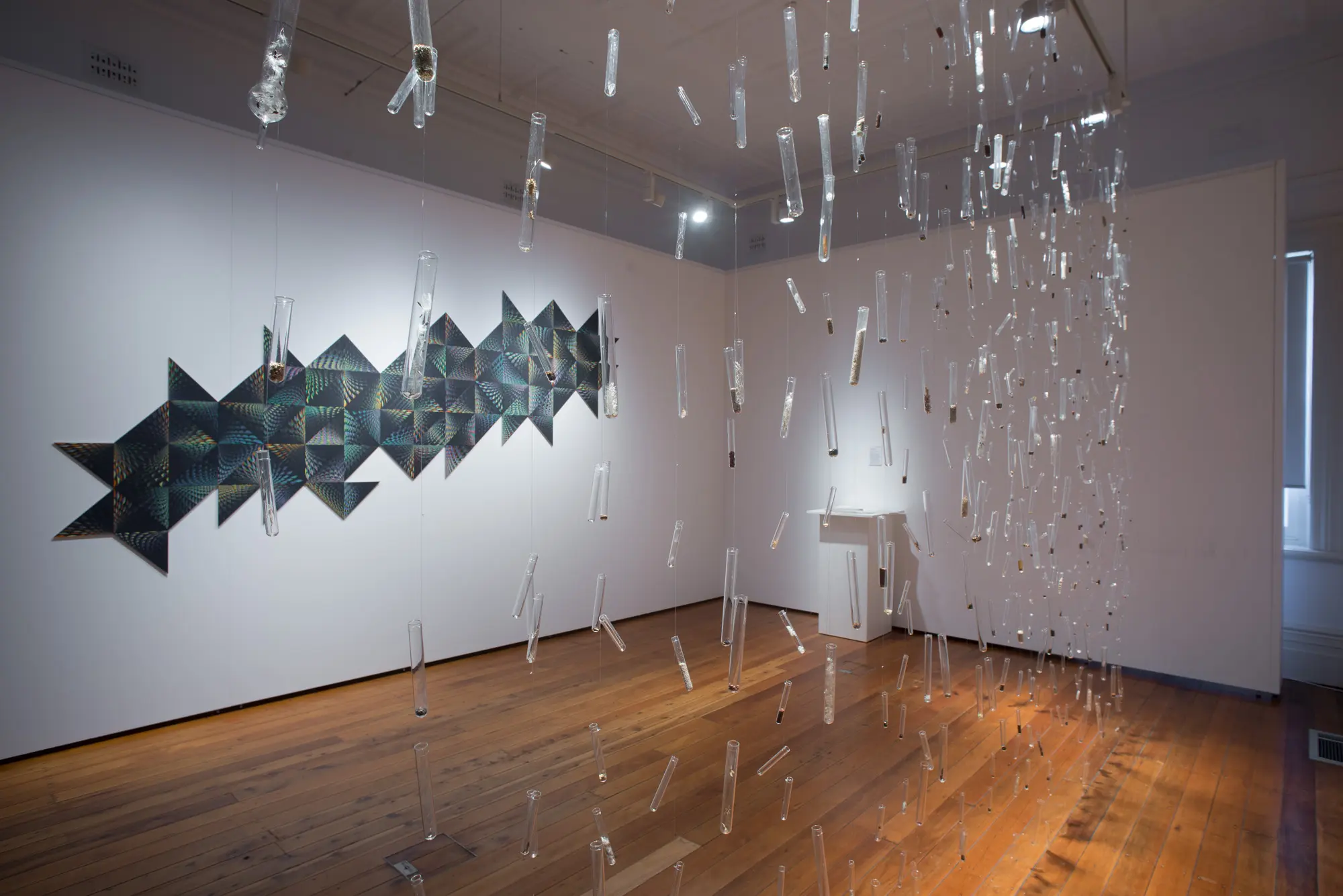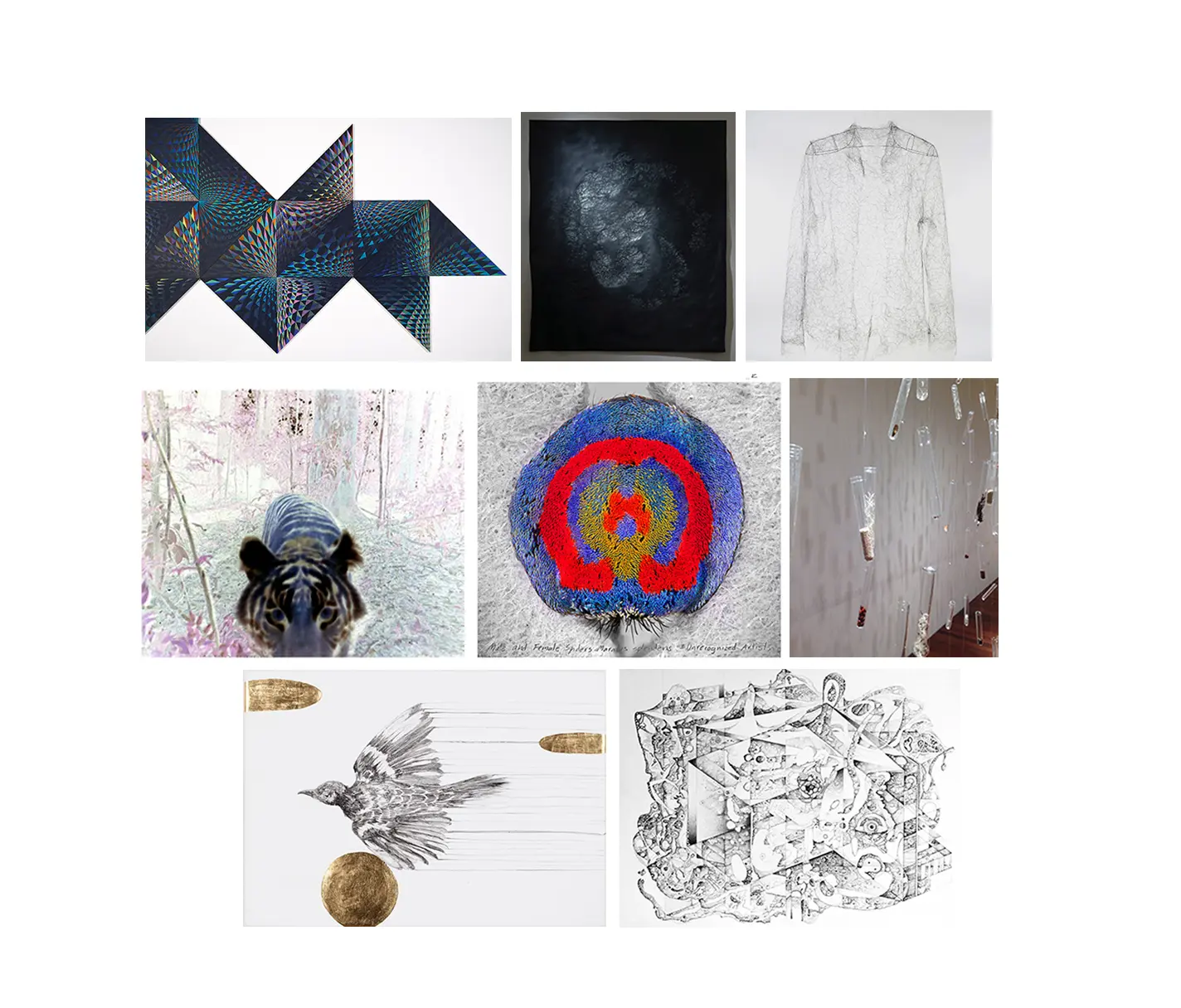
Seeing Science
Seeing Science
15 September to 3 November 2017
Julie Brooke, Maria Fernanda Cardoso, Julia Davis, Janet Laurence, Helen Pynor, Caroline Rothwell, Jack Stahel and Shona Wilson.
Curated by Mary Faith and Lisa Jones,
The exhibition will be launched from 2-4pm, on Saturday 16 September by Ms Kim McKay AO, Director & CEO Australian Museum.
The Grace Cossington Smith Gallery is delighted to announce Seeing Science, an exhibition presenting works by some of Australia’s finest artists examining the important scientific ideas and questions of our time. The works in the exhibition provide a perfect visual avenue for exploring the wonder of science and engaging with scientific concepts and thinking.
Julie Brooke is a Canberra based former biomedical scientist. She completed a thesis investigating parallels between research in science and the visual arts, and explores how thought (hypotheses) can be represented in visual form. Her work Extended Labyrinth is a modular geometric work, investigating the structure involved in the formation of butterfly wings. It developed from a residency held in the ANU Department of Applied Mathematics in 2014.
Maria Fernanda Cardoso is a leading Latin American born artist who lives and works in Sydney. She has a longstanding interest in the natural world and the ambiguity of our relationship to it. She is well known for her unconventional use of materials and the use of animals as inspiration. Cardoso’s works, a video and photograph of the Australian jumping spiders of the Maratus family, popularly known as “peacock spiders’, are witness to the performance and looks of the male spiders in their dance-like display to their female partners.
Julia Davis received a three month Australia Council for the Arts residency at the British School in Rome and in 2013 travelled with volcanologists and geologists to volcanically active sites in southern Italy. Her photographs, and three-dimensional forms cast from volcanic ash, refer to these ‘active’ places as cultural spaces that mirror the fragile human experience of movement, instability, rhythm, reflection and change.
Janet Laurence examines our physical, cultural and conflicting relationship to the natural world through both site specific, gallery and museum works. Her series Fabled, commissioned by Sherman Contemporary Art Foundation, Sydney, uses a hidden camera to photograph animals in their natural habitat in Aceh, Sumatra. Laurence explores issues about the fragility of our natural world and addresses our relationship to nature.
Helen Pynor has a dual background in the biological sciences and the visual arts. Her work explores the interior of the human body, evoking a sense of slippage between time, cultural memory, and the tissues of the body. Pynor has an ongoing fascination with connections between mind and body, culture and biology, body and memory. She has knitted single strands of human hair to form large and small-scale three-dimensional sculptures.
Caroline Rothwell was born in England into a family of scientists, including a father who was an industrial chemist. She responds to the impact of humanity on the planet’s climate and ecosystem, and has been interested in geo-engineering and the technologies that have been envisaged to mitigate global warming. Rothwell’s botanical drawings, of endangered plant and animal species, are drawn using the using car exhaust fume residue that is so damaging to the plants.
Jack Stahel creates drawings and installations that replicate the documenting of science and science theory. Imaginary Science is his fabricated field of research, and involves various creative examinations of how the human brain thinks about itself.
Shona Wilson is inspired to connect people with nature. Initially her works were meticulously crafted forms using nature’s tiny, often overlooked elements – twigs, driftwood, insect wings, feathers, seedpods, shells. Her current focus is photographic One A Day Ephemeral Art Project. Her work Seed Rain was originally developed for the Ku-ring-gai pH: art + science project, presented by Eramboo Artist Environment, NSW National Parks & Wildlife Service and Manly Art Gallery & Museum, 2016-17. Dr Si-Chong Chen was Shona Wilson’s collaborative seed scientist.
| Seeing Science Media Release | Download PDF |
| Seeing Science Catalogue | Download PDF |
| Seeing Science Room sheet | Download PDF |
| Seeing Science Learning Resource – Julie Brooke | Download PDF |
| Seeing Science Learning Resource – Maria Fernanda Cardoso | Download PDF |
| Seeing Science Learning Resource – Laurence-Rothwell | Download PDF |
Exhibition Views copyright Richard Glover



